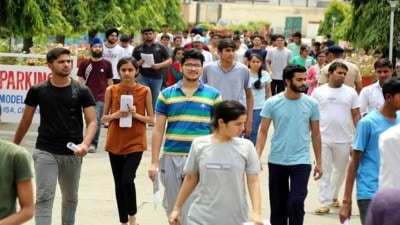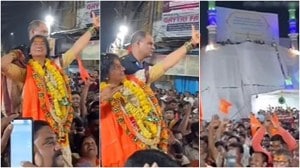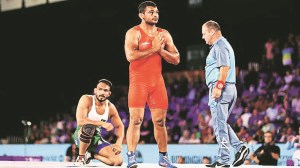- India
- International
Jessica Lall murder case: takeaways from acquittal, conviction and release
A look back at the murder, and the twists and turns during a trial that caught the public imagination.
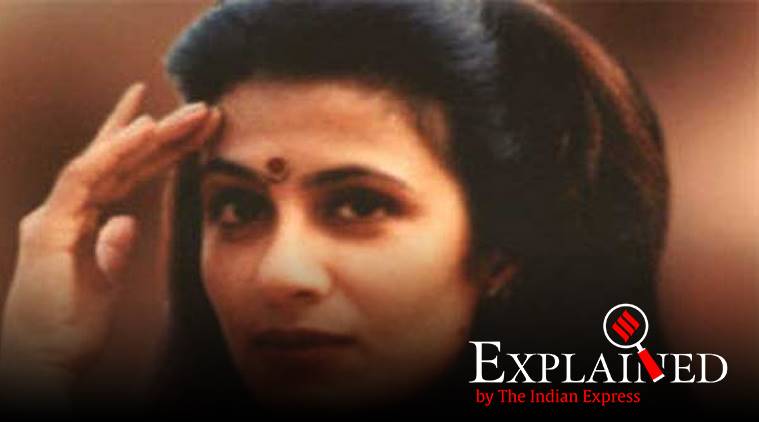 Jessica Lall was shot dead by Manu Sharma on April 29, 1999. (Express Archive).
Jessica Lall was shot dead by Manu Sharma on April 29, 1999. (Express Archive).
On Monday, Manu Sharma, now 43, who was serving a life sentence for the 1999 murder of model Jessica Lall, walked out of jail following the Delhi Lieutenant Governor’s approval for his premature release, as per recommendations by the Sentence Review Board. A look back at the murder, and the twists and turns during a trial that caught the public imagination:
Murder & arrests
Jessica Lall was murdered on April 29, 1999, at a party at Once Upon a Time Restaurant, owned by socialite Bina Ramani, in Delhi’s Qutub Colonnade. Lall and Shayan Munshi, an actor, were serving liquor.
Manu Sharma, son of former Union Minister and Haryana Congress leader Venod Sharma, who was attending the party with friends, asked for two drinks at 2 am. As the party was over, he was refused. Following an argument, he took out his pistol and fired one shot at the roof and another at Lall, which hit her near the left eye, and fled. Lall was declared dead in hospital in the early hours of April 30.
Mehrauli police station had registered an FIR at 4 am, after recording Munshi’s statement. The police seized two empty cartridges and found that a black Tata Safari was missing from the party. The Tata Safari was seized from UP police on May 2. Three days later, the police arrested Amardeep Singh aka Tony Gill and Alok Khanna. Following their statements, police reached out to Sharma’s lawyer; on June 6, Sharma surrendered. The police arrested 10 others including a UP politician’s son, Vikas Yadav.
 Trial & acquittal
Trial & acquittal
The chargesheet was filed August 3. On November 23, the additional sessions judge framed charges against Sharma under IPC sections 302 (murder), 201 (causing disappearance of evidence of offence, or giving false information to screen offender) and 120-B (punishment for criminal conspiracy), and Arms Act section 27.

The trial began in May 2001, against nine accused. The prosecution examined 101 witnesses and two court witnesses.
During the trial, Sharma was enlarged on bail on several occasions until November 11, 2003, when the Delhi High Court dismissed his bail application, following which the Supreme Court too dismissed his special leave petition.
On February 21, 2006, Sharma and the other accused were acquitted by the trial court. The trial court concluded that links in the chain of evidence were either missing or broken. The court held that the prosecution had miserably failed to bring home the guilt of the accused.
The defence had brought a two-weapon theory, arguing that Munshi had said two people fired with two different weapons and his statement was never read to him as it was in Hindi, a language he did not know. The court held that three prosecution witnesses including Munshi were not eyewitnesses.
The trial court agreed the prosecution was able to prove that Sharma was holding a .22 bore Berretta pistol and had bought 25 rounds of cartridges from Haryana Gun House, but observed that the pistol was not recovered from him.
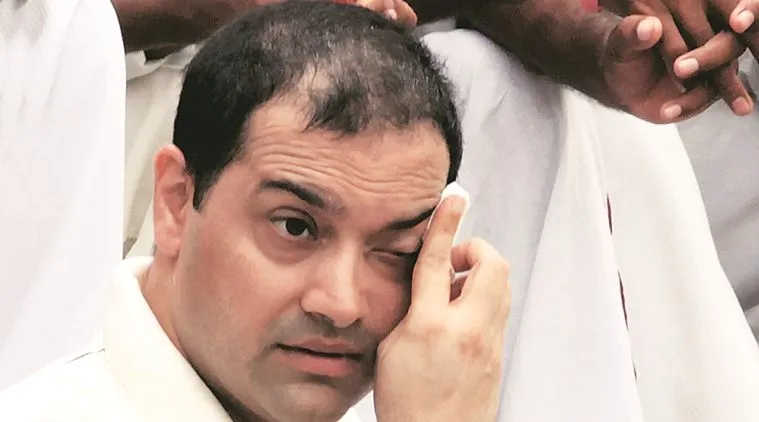 Manu Sharma, son of former Union Minister and Haryana Congress leader Venod Sharma
Manu Sharma, son of former Union Minister and Haryana Congress leader Venod Sharma
The Tata Safari was registered in the name of M/s Piccadilly Agro Industries Private Limited and Sharma was one of its directors. The court did not agree that the accused used it to travel to Qutub Colonnade; it observed that its mere presence at the party was of no consequence.
The court also held that use of telephones by the accused to contact one another before and after the incident was of no consequence as the conversation was not placed on record.
The court also disagreed with the public prosecutor that Sharma had absconded immediately after the crime.
Outrage & conviction
The acquittal led to widespread public outrage, following which police submitted a status report to the Delhi High Court, which accepted it and took up a fast-track case. Sharma was represented by Ram Jethmalani (now deceased) in the Delhi High Court and later in the Supreme Court.
On December 18, 2006, the High Court convicted Sharma observing that the trial court judgment was “an immature assessment of material on record which is self-contradictory, based on misreading of material and unsustainable”. The court sentenced Sharma to life, awarded lesser sentences to Vikas Yadav and Amardeep Gill, and acquitted six others.
📣 Express Explained is now on Telegram. Click here to join our channel (@ieexplained) and stay updated with the latest
The High Court rejected the two-weapon theory as a “concoction to the defence and a manipulation of evidence particularly that of Shyam Munshi who, for the first time in court, introduced such a story”.
Sharma appealed twice to the Supreme Court. In April 2010, the Supreme Court upheld his conviction and life term.
The Supreme Court held that the evidence regarding the incident, the testimonies of witnesses, evidence connecting the vehicles and cartridges to Sharma, as well as his conduct after the incident, proved his guilt beyond reasonable doubt.
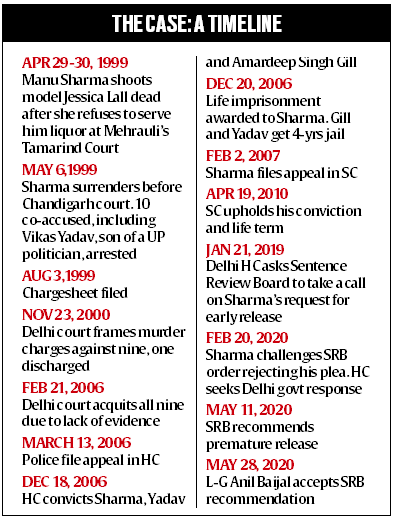
On Munshi’s statement about “another gentleman” who fired the shot, the Supreme Court said that although he turned hostile, his evidence showed that Sharma was at the scene and this was rightly accepted by the High Court. Munshi stands accused of lying under oath before the sessions court.
Takeaways from the case
The case brought into focus the influence of media coverage. This was highlighted by the Delhi High Court as well as the Supreme Court. The Supreme Court observed that various articles in the print media gave rise to unnecessary controversy and “apparently, had an effect of interfering with the administration of criminal justice”. The Supreme Court held that “presumption of innocence of an accused is a legal presumption and should not be destroyed at the very threshold through the process of media trial and that too when the investigation is pending”.
While overturning the acquittal of Sharma, the Delhi High court made observations about the functioning of courts and appreciation of evidence. This led to public criticism of bias in prosecuting powerful people. The Supreme Court said every possible effort should be made and precautions taken which will help in preservation of public faith.
Following the conviction by the High Court, a different Bench directed the government to create a witness-protection policy.
More Explained
EXPRESS OPINION
Apr 18: Latest News
- 01
- 02
- 03
- 04
- 05











